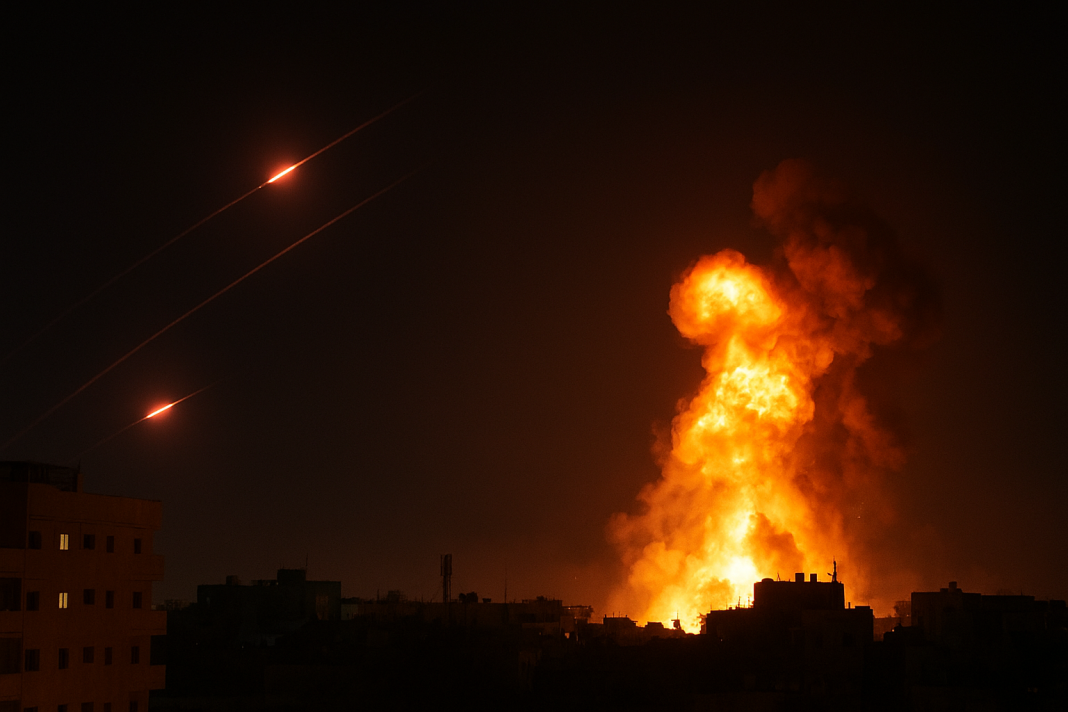In Yemen’s capital, an Israeli strike last week killed the head of the Houthi-controlled government along with several cabinet members. This marked one of the most senior losses for the Iran-backed group since the conflict began. The attack occurred while government officials had gathered for a workshop.
Government Assassination Sparks Escalation
Among those killed were top ministers who handled foreign and information affairs within the government. The strike, though not hitting the group’s supreme leader or senior military figures, removed much of the political leadership of the Houthi government. The Houthis quickly appointed an interim head of government to fill the gap and vowed that their struggle would not end.
Within hours of the announcement, the group declared that the killings would not go unanswered. Their governing council made clear that retaliation would be directed at Israel, stressing that the Houthi government would continue its operations.
UN confirms raids in Sanaa as Houthis detain personnel and keep aid offices under control
Missile Barrage Targets Israel And Government Infrastructure
Soon after the strike, Houthi fighters launched a series of missile attacks aimed at Israeli cities. Air raid sirens were triggered, and defense systems worked to intercept incoming projectiles. The Houthis declared the barrage as direct revenge for the assassination of their government’s prime minister.
Alongside missile strikes, the group also targeted international ships passing through the Red Sea. They described the action as part of their blockade on Israel. However, many of the ships hit had no visible ties to Israel, causing disruption far beyond the conflict zone and indirectly affecting global trade routes tied to government regulations.
Treasury Targets 3 Ships Funding Iran-Backed Houthis in Red Sea
This is not the first time the Houthis have used the Red Sea as a pressure point. For nearly three years, they have regularly fired missiles and drones at both Israeli territory and international shipping lanes. These attacks, often justified as solidarity with Palestinians, have drawn strong responses from Israel.
Israeli jets flew hundreds of miles to strike Houthi government power plants and ports, but these missions have not been able to halt the Houthi government’s operations. Despite repeated bombardments, the group has continued its missile and drone launches.
Israel’s Threat Of “All Ten Plagues”
After the recent missile fire, Israel’s leadership warned Yemen of severe consequences. In a cabinet meeting, officials described the assassination strike as having wiped out most of the Houthi government. They also said that more senior figures in the government could be targeted in the future.
The most striking warning came in the form of a biblical reference. Israeli leaders declared that if Houthi attacks continue, Yemen would face “all ten plagues,” a phrase that recalls ancient punishments described in scripture. The wording was meant to send a powerful message of deterrence, highlighting the seriousness of Israel’s stance against the Houthi government.
This confrontation adds to a broader regional conflict. The Houthis, like Hamas and Hezbollah, receive support from Iran. Over the last two years, however, Iran and its network of allies have faced several setbacks. That has left the Houthi government exposed in a direct fight against Israel.
Houthi forces launch sammad-4 drone onslaught with yafa missiles in dramatic strike on IDF HQ
As the strikes and counter-strikes intensify, the Houthis maintain their ideological message. Their flag continues to bear the slogan: “God is great, death to America, death to Israel, curse the Jews, and victory to Islam.” Once a loosely organized rebellion, the group now controls a significant part of Yemen’s population and exercises governmental authority over its territory.
The latest events show how the war in Gaza has spread tensions across the Middle East. From missile attacks on Israeli cities to disruption of global trade in the Red Sea, the Houthi government has become a central actor in regional instability.

